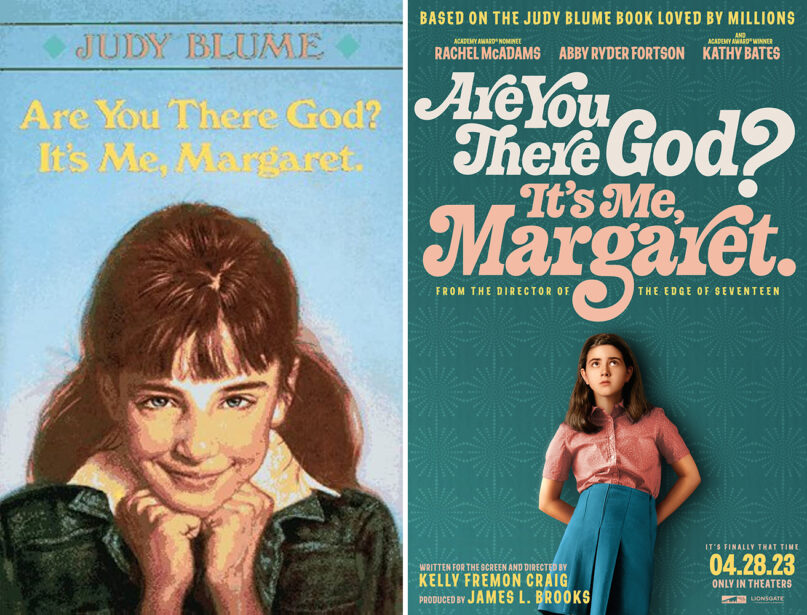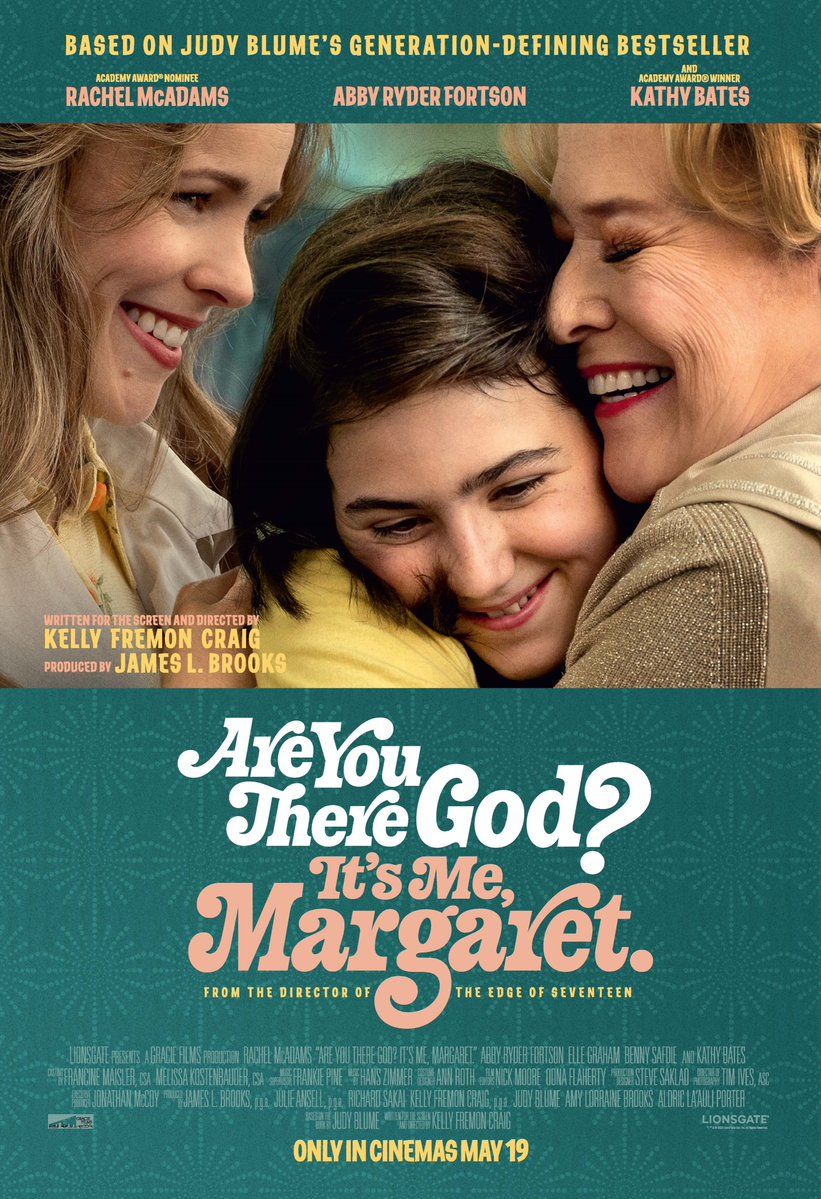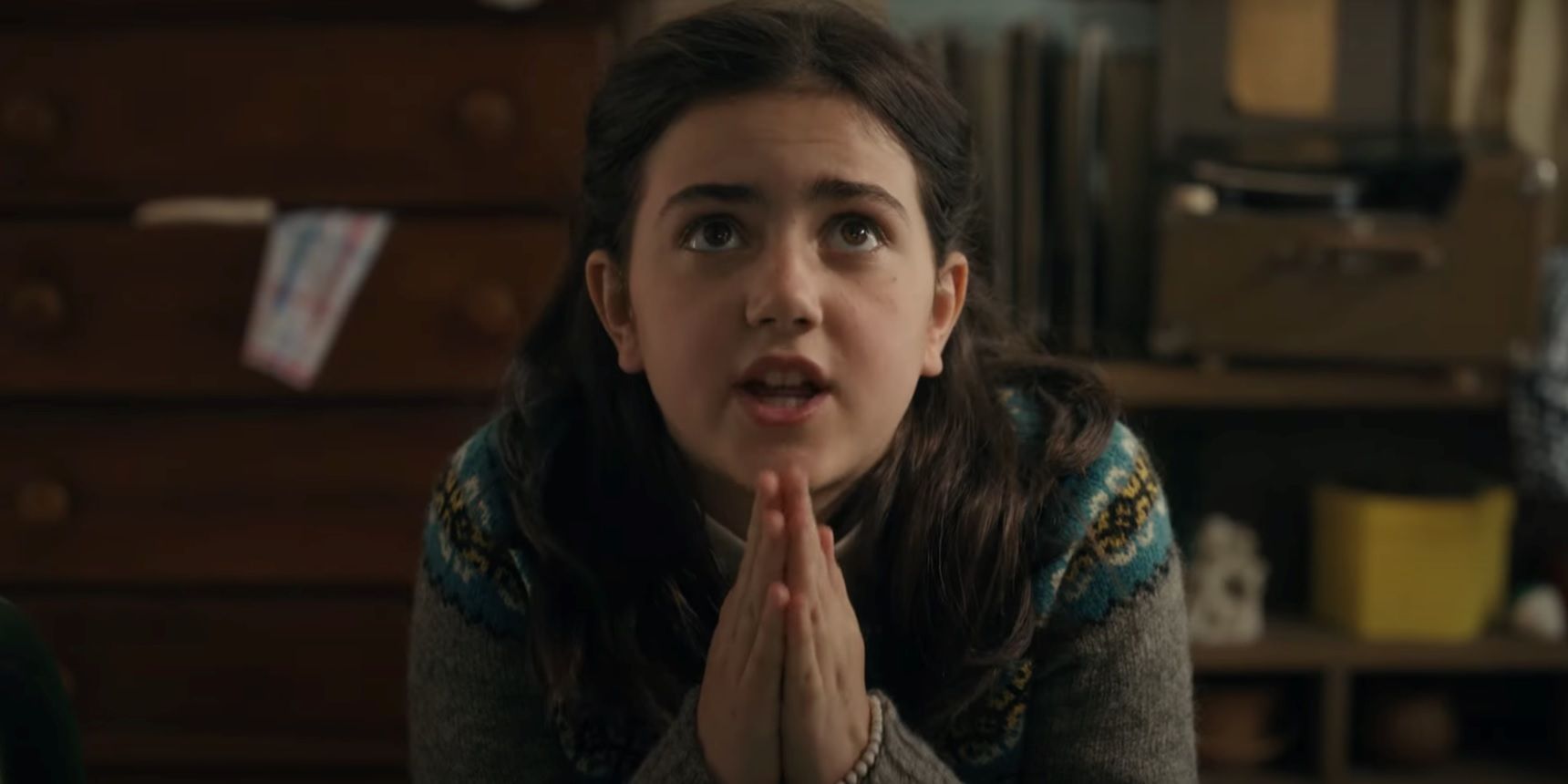Have you ever felt like you're searching for something, a sense of belonging or understanding, especially when it comes to big questions about life and belief? Well, that's a feeling many of us know, and it's certainly a central part of Margaret Simon's story in Judy Blume's beloved book, "Are You There God, It's Me, Margaret." People often wonder about Margaret's faith, and that's a very good question to ask, actually.
Margaret, you see, is a character who really speaks to so many readers, young and old, as she tries to sort out her place in the world. A big part of her journey involves figuring out what religion, if any, feels right for her. She's at that age where everything feels new and a bit confusing, and so she starts talking to God, trying to find some answers, too.
This quest for spiritual identity is, in a way, something that really makes the book special, and it reflects broader experiences people have with faith. Surveys, for instance, like those from the Pew Research Center, show us that religious affiliation and the importance of religion in people's lives can vary quite a lot across different countries and even within communities, so it's a very common thing to explore, in some respects.
Table of Contents
- Margaret Simon: A Brief Look at Her Story
- The Core Question: Margaret's Religious Identity
- Why Margaret's Religious Journey Resonates
- How Religious Affiliation is Explored and Understood
- Addressing Common Questions About Margaret's Faith
Margaret Simon: A Brief Look at Her Story
Margaret Simon is, you know, an almost twelve-year-old girl who moves with her family from New York City to the suburbs of New Jersey. This big move brings all sorts of new challenges and questions for her. She's trying to fit in with new friends, deal with puberty, and, perhaps most importantly, figure out her own beliefs. It's a very relatable time in life, as a matter of fact.
Key Details About Margaret Simon
| Detail | Description |
|---|---|
| Age | Nearly 12 years old |
| Family Background | Mother is Christian, Father is Jewish |
| Religious Upbringing | Raised without formal religious instruction; encouraged to choose her own path. |
| Key Quest | Searching for a religious identity that feels true to her. |
| Location | Moves from New York City to Farbrook, New Jersey. |
The Core Question: Margaret's Religious Identity
The main question people often ask about Margaret is just what her religion is. The interesting thing is that she doesn't actually have one when the story begins. Her parents, who come from different religious backgrounds, made a choice not to raise her in any particular faith. They wanted her to choose for herself when she felt ready, which is a pretty big decision for a young person, you know.
A Blend of Traditions: Jewish and Christian Roots
Margaret's family situation is a little unique, as her mother is from a Christian background and her father is from a Jewish background. This mixed heritage means Margaret gets to see different customs and beliefs up close. She visits both her Jewish grandparents and her Christian grandparents, and she experiences traditions from both sides, which is kind of interesting.
Her parents' decision to let her choose her own path is, in some respects, a progressive idea, but it also places a lot of pressure on Margaret. She feels this strong need to pick a side, to belong somewhere, especially when her friends are all talking about their own religious affiliations, so it's a bit of a challenge.
Margaret's Personal Quest for Belief
Throughout the book, Margaret tries to understand what it means to be Jewish and what it means to be Christian. She visits churches and synagogues, she reads books, and she asks questions. She's really trying to find a connection, a feeling of rightness, with one of these paths. It's a very personal and often confusing search, honestly.
She tries out different experiences, like going to a temple with her Jewish grandmother or attending church services. She's not just passively observing; she's actively trying to feel if either of these traditions resonates with her spirit. It's a genuine effort to figure things out, you know.
The Role of Prayer and Conversation with God
Perhaps the most famous part of Margaret's journey is her private conversations with God. She doesn't pray in a formal, religious way. Instead, she talks to God like a friend, sharing her deepest thoughts, fears, and hopes. "Are you there God? It's me, Margaret," is a line that pretty much sums up her direct and unfiltered approach to spirituality.
These conversations are her way of processing everything, from her changing body to her search for faith. She's looking for guidance, for a sign, for something to help her make sense of it all. It's a very intimate and vulnerable aspect of her story, and it's quite moving, too.
Why Margaret's Religious Journey Resonates
Margaret's story about religion continues to be popular because it touches on feelings many people have, especially when they are young. It's not just about choosing a religion; it's about finding your identity and your place in the world. This is a very universal theme, you know.
The Universal Search for Belonging
Everyone, at some point, wants to feel like they belong. For Margaret, this includes finding a religious community where she feels at home. She sees her friends going to Sunday school or celebrating holidays, and she feels a bit left out. This desire to connect with something larger than herself is a really powerful human need, honestly.
Her quest for a religious identity is, in a way, a quest for belonging, for a group that shares her values and beliefs. It's about finding a sense of community and shared purpose, which is something many people look for in their lives, as a matter of fact.
Understanding Religious Exploration in Youth
The book also shows us how young people often explore big ideas, like religion, for the first time. They're trying to figure out what they believe, separate from what their parents or friends believe. It's a time of questioning and self-discovery, which can be both exciting and a little scary, you know.
Margaret's journey highlights that this exploration isn't always neat or clear-cut. It can be messy, full of doubts and experiments, and that's perfectly normal. It's a process, and it takes time to find what truly resonates, so it's quite a realistic portrayal.
Society's Diverse Religious Landscape
Margaret's story, in a way, mirrors the diverse religious landscape we see in many places. For example, research on religion in many countries around the world shows a wide variety of beliefs and practices. You have people identifying as Catholic, Protestant, Jewish, Muslim, and many other affiliations, too. This broad spectrum of beliefs means that someone like Margaret, with mixed heritage, is actually quite representative of the varied experiences people have.
The book came out at a time when discussions about different faiths were becoming more common, and it still feels very relevant today. It helps readers appreciate that there are many paths people follow when it comes to faith, and that's a good thing, you know. This kind of diversity is something that surveys, like those from the Pew Research Center, often measure and report on, showing us how different groups like "the world's Muslims" or various Christian traditions fit into the larger picture of "Religion, politics and society."
How Religious Affiliation is Explored and Understood
Understanding Margaret's journey also helps us think about how religion plays a part in people's lives more generally. It's not just about what you believe, but also how that belief shapes your daily life, your family, and your community. This is something that researchers often try to understand, too.
Measuring Beliefs and Practices
When we look at religion in a broader sense, like in large-scale surveys, researchers try to capture a lot of different aspects. They ask about things like "beliefs about God," "religious clothing and personal appearance," and even "religion and food." This is because religion is, in some respects, a very comprehensive part of life for many people.
Measuring religion in surveys can be quite complex, as the text mentions, comparing "results from surveys conducted using different 'modes' of data collection." But the goal is always to get a clearer picture of how faith affects people's lives and worship habits. Margaret's personal exploration, in a way, is a tiny, very human version of this larger societal inquiry, you know.
The Importance of Personal Connection
The data from surveys often shows how important religion is to people. For instance, some findings indicate that "Adults now say religion is 'very important' in their lives." While the exact percentage might shift over time, the underlying truth is that for many, faith provides a deep sense of meaning and purpose. Margaret's direct conversations with God highlight this very personal and internal aspect of belief, even without formal affiliation.
It's about that individual connection, that inner feeling, that often drives people's religious lives, and that's a pretty powerful thing, as a matter of fact. The latest release of the "landscape survey includes a wealth of information on the religious beliefs and practices of the American public, including the importance of religion in people's lives," which really underscores this point.
Different Paths, Shared Questions
Just like Margaret explores both Jewish and Christian traditions, society is full of people from various religious backgrounds. If you look at, say, the "religious affiliation of members of 117th Congress," you see a mix of "Catholic, Catholic, Baptist, Catholic, Protestant unspecified, Episcopalian, Unitarian Universalist, Jewish," and more. This variety shows that there are many different ways people connect with faith.
What Margaret's story reminds us is that even with all these different paths, many people share similar fundamental questions about meaning, purpose, and their place in the universe. It's a common human experience, really, to ponder these things, and that's why her story resonates so much.
Addressing Common Questions About Margaret's Faith
Here are some common questions people often have about Margaret's religious journey:
Did Margaret choose a religion by the end of the book?
No, she doesn't actually pick a specific religion by the story's end. Margaret's journey is more about the process of searching and asking questions than it is about finding a definitive answer. She learns a lot about herself and her connection to something bigger, but she doesn't formally affiliate with either Judaism or Christianity, which is quite interesting, you know.
What religious backgrounds do Margaret's parents have?
Margaret's mother comes from a Christian background, and her father comes from a Jewish background. They decided to let Margaret explore both traditions and choose her own path, which was, in a way, pretty open-minded of them, you know.
Why is Margaret's religious journey so important in the story?
Margaret's religious journey is a very central part of the story because it mirrors her overall search for identity and belonging during adolescence. It's a metaphor for all the big changes she's experiencing, from puberty to making new friends. Her conversations with God are her way of coping with these changes and trying to find answers to life's big questions, which is something many people can relate to, honestly.
Learn more about Margaret Simon's enduring appeal on our site, and you might want to link to this page for more on coming-of-age stories.



Detail Author:
- Name : Rosanna Toy DVM
- Username : bweber
- Email : jerrell.halvorson@yahoo.com
- Birthdate : 1988-10-24
- Address : 739 Watsica Overpass Apt. 543 North Lazarotown, NE 16581
- Phone : +19472337548
- Company : Aufderhar, Lebsack and Auer
- Job : Library Worker
- Bio : Eos sit cumque occaecati. Dolorem nemo alias omnis voluptatem. Ut in eos est et.
Socials
linkedin:
- url : https://linkedin.com/in/buckridgee
- username : buckridgee
- bio : Itaque sunt quaerat et consectetur sit fugit et.
- followers : 2291
- following : 1502
facebook:
- url : https://facebook.com/ebuckridge
- username : ebuckridge
- bio : Minus rerum vitae delectus dolores natus. Omnis molestiae eos repellat aut.
- followers : 2762
- following : 552
instagram:
- url : https://instagram.com/eddie_xx
- username : eddie_xx
- bio : Maxime commodi quos non aspernatur. Architecto sequi est eos et. Veniam aut qui est vel optio quia.
- followers : 1466
- following : 1344
tiktok:
- url : https://tiktok.com/@buckridgee
- username : buckridgee
- bio : Dolorum beatae dolorum totam officiis aliquid dolores ipsam.
- followers : 5914
- following : 769